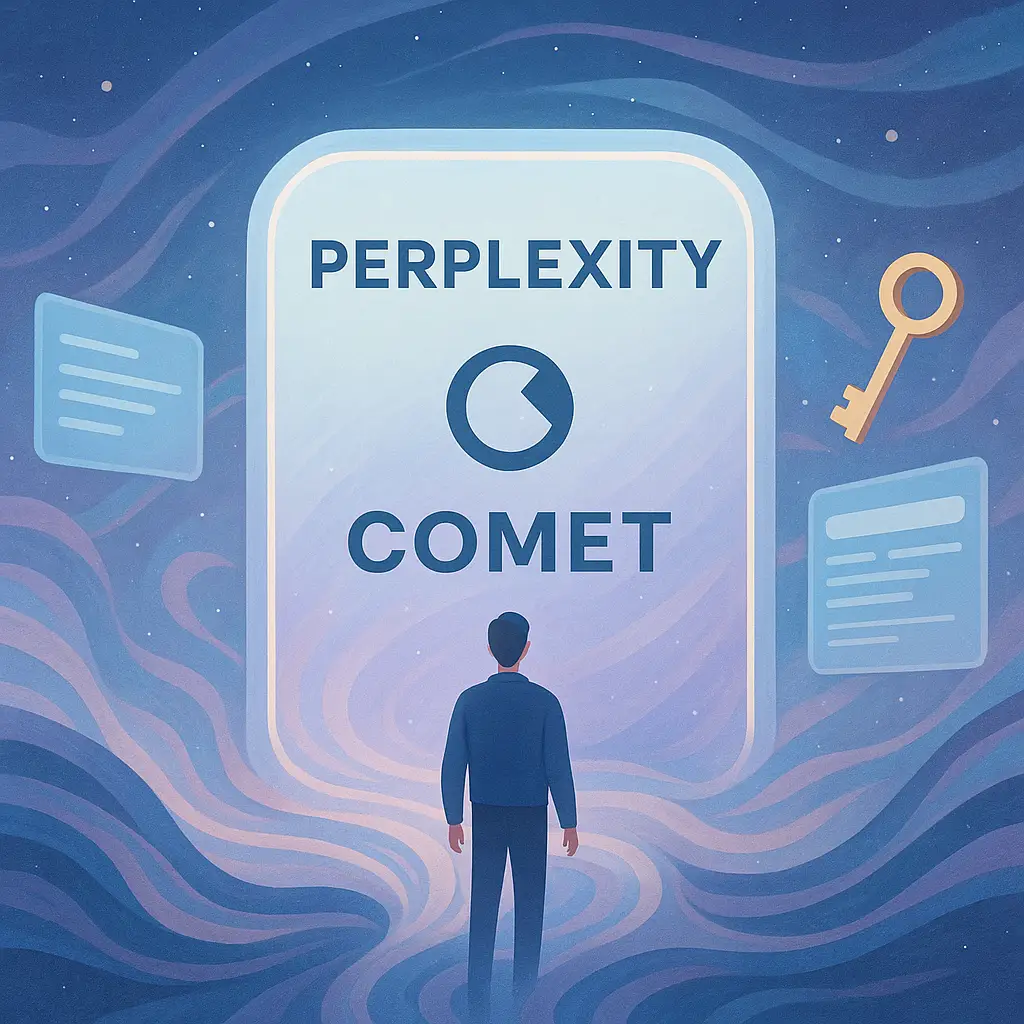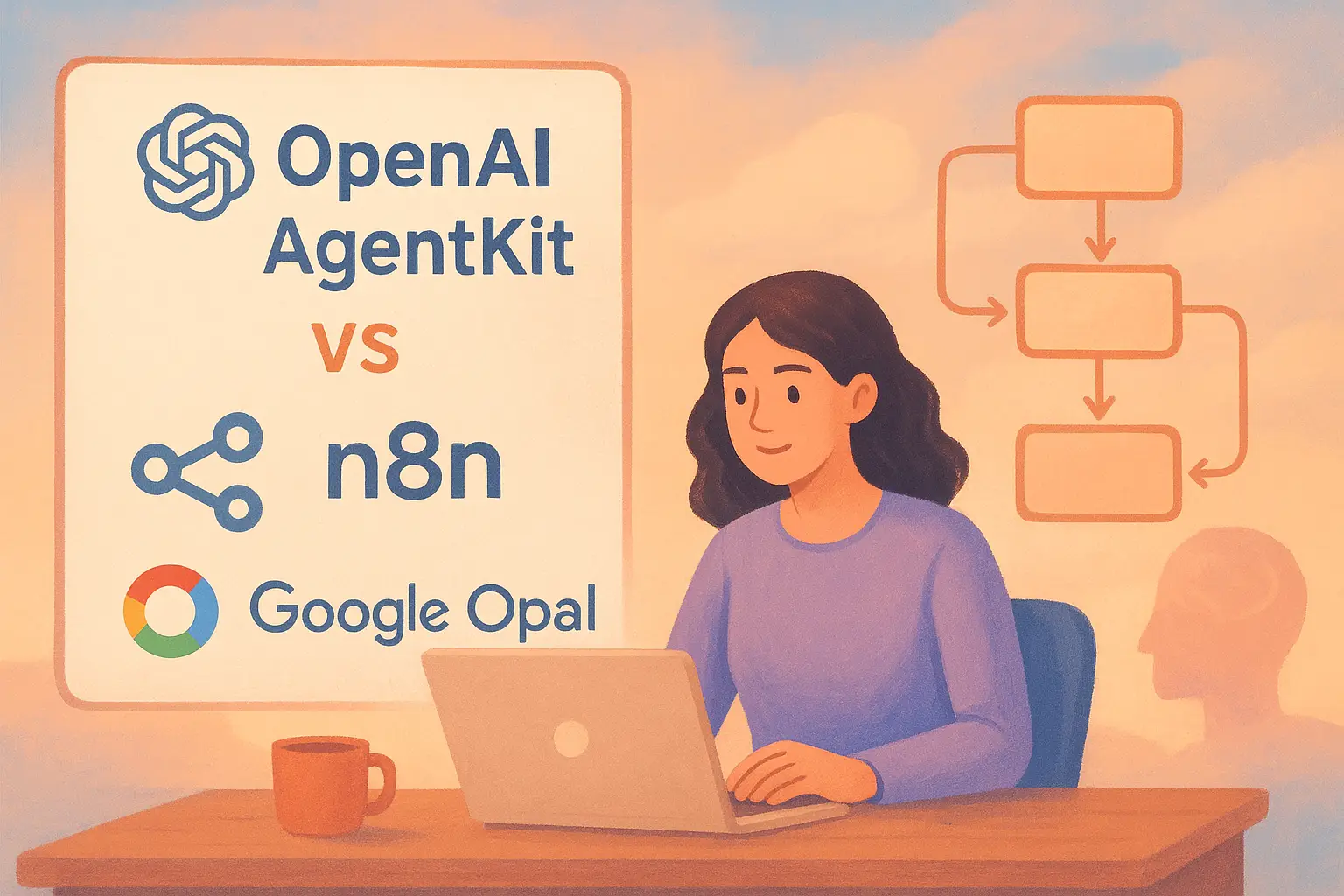
Facebook Ads Competitor Analysis via n8n
Table of Contents
- Introduction
- Understanding the Need for Competitor Analysis
- Benefits of Automating Facebook Ads Analysis
- Tools and Technologies
- Building an n8n Workflow
- Step-by-Step Guide to the Workflow
- Troubleshooting and Best Practices
- Future Enhancements
- Conclusion
- Frequently Asked Questions (FAQs)
Introduction
Competitor analysis remains a cornerstone of strategic digital marketing. In today's highly competitive landscape, understanding how rivals structure their Facebook Ads offers a competitive edge that can make or break campaigns. Imagine not having to sift through countless ads manually. Automation not only saves time but also surfaces deeper insights that human analysis might overlook.
In this article, I will guide you through automating competitor analysis of Facebook Ads by creating a workflow using n8n. We will delve into every aspect, from the initial scrape of ad data using tools like Apify to the intricate analyses driven by AI models such as Gemini and OpenAI. Moreover, should you wish to explore a ready-made demonstration, feel free to check out this engaging workflow example on n8n's workflow library.
I'll craft this guide in a warm, conversational tone and provide plenty of examples, tables, lists, and links to make the content accessible to both beginners and tech-savvy marketers alike. So, grab a cup of coffee and let's explore this journey of streamlined competitor analysis.
Automate with n8n
Build workflows that save time and scale your work. Start free. Grow as you go.
Start Free with n8nUnderstanding the Need for Competitor Analysis
In the digital realm, competitors are not just fellow market players; they are valuable sources of insight into trends, audience behavior, and emerging strategies. Analyzing Facebook Ads gives you a window into the messaging, visual aesthetics, and targeting strategies of your competitors. This information can be harnessed to optimize your own advertising efforts.
Why Competitor Analysis Matters
- Benchmarking Performance: Discover how your ads measure up against industry standards.
- Identifying Trends: Spot emerging patterns in ad design, copy, and targeting.
- Refining Strategies: Learn from the successes—and missteps—of your competitors.
- Resource Optimization: Avoid reinventing the wheel by leveraging competitor insights.
- Maximizing ROI: Allocate budgets based on proven strategies from the market.
The Challenges of Manual Analysis
Manual competitor analysis on platforms like Facebook poses significant challenges. Here are common pitfalls:
- Time Consuming: Sifting through hundreds of ads is not practical.
- Human Error: Subjectivity may lead to missed insights.
- Data Volume: The sheer amount of ad data can overwhelm manual processes.
- Inconsistency: Manual collection often results in inconsistent data over time.
Given these challenges, automating the process becomes essential to ensure both efficiency and accuracy.
Benefits of Automating Facebook Ads Analysis
When you automate Facebook Ads analysis, you transform raw data into actionable insights. This allows you to remain agile in a dynamic advertising environment. Let’s highlight some of the primary benefits:
1. Time Efficiency
Automation minimizes the hands-on time required:
- Real-Time Data Collection: Data is refreshed automatically.
- Scheduled Runs: Workflows can be set up to run on a regular basis.
- Reduced Manual Labor: Frees up your team for higher-level strategy development.
2. Enhanced Data Accuracy
Automation powered by AI ensures precise data analysis:
- Elimination of Bias: Consistent metrics without personal bias.
- Comprehensive Analysis: AI examines multiple facets of ad content (text, images, sentiment).
- Regular Updates: Data is processed in real-time, reducing the lag in insights.
3. Scalability
Automation provides scalability that manual methods lack:
- Multiple Competitors: Easily add more competitors without additional manual steps.
- Data Expansion: Integrate further metrics as needed.
- Seamless Integration: Connect various tools into one robust workflow.
4. Actionable Insights
Automated systems yield richer insights:
- Strategic Recommendations: Identify strengths, weaknesses, and improvement areas.
- Performance Benchmarks: Compare competitors’ strategies against your own.
- Trend Identification: Notice subtle trends that can guide your future strategy.
For a subtle demonstration of how these benefits come together, I encourage you to explore the detailed workflow available on n8n's workflow library. It’s an excellent example of how these benefits can be realized in a real-world scenario.
Tools and Technologies
Automating this process is made possible by integrating several powerful tools. Each has a specific role in the workflow, contributing to the seamless execution of competitor analysis. Let’s review these crucial tools:
| Tool | Role in the Workflow | Documentation/Link |
|---|---|---|
| n8n | Orchestrates and automates the entire workflow | n8n |
| Apify | Scrapes data from the Facebook Ad Library | Apify - Facebook Ads Library Scraper |
| Gemini AI | Analyzes ad creatives, including text and images, for sentiment and content insights | Gemini |
| OpenAI | Provides deeper analytical insights and context-aware analysis | OpenAI Documentation |
| Google Sheets | Stores, visualizes, and reports the processed data | Google Sheets API |
Through the integration of these tools, you can create a holistic, efficient, and highly responsive system for competitor analysis of Facebook Ads.
Building an n8n Workflow
At the heart of this automated solution lies n8n. Known for its flexible interface and robust capabilities, n8n ties together the different components to create a seamless workflow. This section explains how to construct this workflow, step by step.
Why n8n?
n8n is an open-source workflow automation tool that empowers you to integrate various APIs and services. Its visual interface means you don’t need advanced coding skills to design an effective system. n8n also supports scheduling, error logging, and data transformation, all of which are critical for maintaining an automated workflow.
The charm of n8n is in the details: each node represents a small function that can be linked to create a larger, comprehensive process. Plus, the community offers a range of workflows that can spark ideas for your own implementations.
Step-by-Step Guide to the Workflow
Let’s break down the process into detailed steps, covering each phase from data collection to final analysis and reporting. This guide will ensure even those new to automation can follow along.
Step 1. Data Collection with Apify
Data collection is the foundation of the workflow. Rather than manually gathering competitor data, you can use Apify, which is designed to extract data from the Facebook Ad Library effortlessly.
Setting Up Apify
- Create an Account: Sign up on Apify.
- Configure the Actor: Use the "Facebook Ads Library Scraper" actor. This tool accepts parameters like keywords, region, and date range.
- API Key: Secure your API key and input it in your n8n node configuration.
Example Configuration for Fashion Competitors
Suppose you are analyzing ads from fashion stores. A possible configuration might be:
- Keywords: fashion, boutique, designer
- Region: United States
- Date Range: Last 30 days
This configuration ensures that data pertaining to fashion competitors is fetched accurately. Once configured, Apify will automatically scrape the necessary data and pass it on to the next stage of the workflow.
Step 2. Analyzing Data Using Gemini AI
After collecting the data, the next task is in-depth analysis. Google's Gemini AI steps in to process both images and text from the collected ads.
How Gemini AI Works in This Workflow
- Visual Analysis: For ad images, Gemini provides detailed visual descriptions, extracts textual overlays, and gauges sentiment.
- Text Analysis: For ad copy, the system examines the tone, style, and key messages.
By analyzing both visual and textual content, Gemini AI gives you a multi-dimensional view of the competitor ads. This aids in understanding not just what is being advertised, but also how it is presented to the audience.
Take a look at Google Gemini’s documentation to learn more about its capabilities.
Step 3. Enhancing Insights with OpenAI
While Gemini AI gives you detailed immediate analyses, OpenAI helps by offering deeper contextual insights and comparative analysis. This node refines the data further.
OpenAI’s Role in the Workflow
- Comparative Analysis: It correlates the insights derived from Gemini with your own campaign data or industry benchmarks.
- Narrative Insights: It generates recommendations and highlights trends that would otherwise go unnoticed.
- Actionable Suggestions: It can suggest tweaks and improvements for future ad creatives.
For more detailed guidance on using OpenAI models, refer to OpenAI’s official documentation.
Step 4. Storing and Visualizing Data with Google Sheets
Once the data has been analyzed by Gemini and refined by OpenAI, it needs to be stored in an accessible, user-friendly format. Google Sheets acts as your central database and reporting tool.
Configuration and Benefits
- Easy Access: Google Sheets is widely used, meaning stakeholders can readily access the data.
- Dynamic Views: Create charts and tables directly in Sheets to visualize trends and patterns.
- Mapping the Data: Use n8n’s integration to automatically map data fields like ad text, image descriptions, sentiment scores, and key insights into a structured table.
Below is an example layout of how you might structure the Google Sheets data:
| Competitor Name | Ad Copy | Visual Description | Sentiment Score | Key Insights |
|---|---|---|---|---|
| FashionBrandX | "Summer Collection Sale" | Vibrant imagery with clear product focus | 8.5/10 | High visual impact with upbeat tone |
| BoutiqueY | "Exclusive New Arrivals" | Minimalist design with distinct logos | 7/10 | Clean execution with subtle appeal |
| Trendz Z | "Limited Time Offer" | Bold text overlay and striking colors | 8/10 | Evokes urgency and drives action |
By storing data in Google Sheets, you create a repository of information that is both visually accessible and easy to analyze at a glance.
Step 5. Automation and Scheduling
The real power of this workflow is its ability to run on its own. With n8n, you can schedule tasks to run at regular intervals without manual interference.
Setting Up Scheduling
- Triggers: Use n8n's Trigger nodes (Manual, Cron, or Webhook) to start the workflow.
- Intervals: Set the workflow to run daily, weekly, or on your preferred schedule.
- Notifications: Configure alerts or email notifications, so you stay informed of each run’s outcomes.
Subtle Promotion of a Pre-Built Workflow
For those who like to see a simplified version of this entire process in action, consider exploring this built workflow on n8n. It demonstrates a practical application of this process with a user-friendly interface and easy-to-follow nodes. This example showcases an optimal configuration that you can adapt to your needs.
Troubleshooting and Best Practices
Every automation can face hiccups. Here’s how to keep your workflow running smoothly.
Common Issues and Solutions
| Issue | Possible Cause | Recommended Fix |
|---|---|---|
| API Rate Limit Exceeded | Excessive requests to Facebook Ad Library or Apify | Introduce delays or adjust scheduling, consider proxy usage |
| Authentication Errors | Incorrect API key/credential configuration | Verify API keys, regenerate if necessary, and check permissions |
| Data Format Issues | Mismatched data structure between nodes | Use transformation nodes in n8n to reformat the data appropriately |
| Incomplete Data | Parameter misconfiguration in Apify settings | Double-check search criteria and configuration settings |
Best Practices for Smooth Operation
- Regularly Update Keys: Periodically check your API keys and credentials.
- Review Configurations: Ensure parameters in Apify and n8n nodes are current and accurate.
- Monitor Logs: Use n8n’s logging functionality to spot errors early.
- Fine-Tune AI Prompts: Adjust parameters in Gemini AI and OpenAI nodes based on output quality.
- Keep Stakeholders Informed: Regularly share updated Google Sheets data and automated reports.
A simple checklist for maintaining your workflow might look like this:
- API keys verified and updated
- Apify parameters reviewed monthly
- Logs monitored for errors
- AI node prompts fine-tuned based on output
- Google Sheets data validated during scheduled reviews
For expanded tips, you can refer to community guides on n8n's Forum and Apify's help documentation.
Future Enhancements
Innovation should never stop. Here are some ideas to take your competitor analysis workflow to the next level:
1. Advanced Image Recognition and Analysis
- Additional AI Models: Integrate specialized image recognition models to analyze finer details like color composition, facial expressions, and design intricacies.
- Video Ads: Extend capabilities to include video ad analysis with tools like Google Cloud Video Intelligence or similar APIs.
2. Enhanced Reporting Dashboards
- BI Tool Integration: Connect your Google Sheets data to a business intelligence platform like Google Data Studio or Tableau to generate interactive dashboards.
- Real-Time Visualization: Use these dashboards in meetings and strategy sessions to discuss up-to-date competitor trends.
3. Cross-Platform Analysis
- Integrate More Data Sources: Link insights from other social media platforms such as Instagram, Twitter, or LinkedIn for a comprehensive competitor view.
- Unified Reporting: Combine data across platforms to yield deeper insights regarding overall brand performance in digital marketing.
4. Automated Recommendations
- Alert Systems: Develop a system that sends real-time alerts if competitor strategies change significantly.
- AI-Powered Insights: Use machine learning to predict future trends based on historical data, tailoring recommendations for ad strategy adjustments.
Each of these enhancements builds upon your existing workflow, allowing for continuous improvement and ensuring that your competitive intelligence remains robust and forward-looking.
Conclusion
Automating competitor analysis of Facebook Ads using an n8n workflow is a practical solution for modern marketers. This approach eliminates cumbersome manual data collection and offers deep, actionable insights. By leveraging Apify for data scraping, Gemini AI for ad analysis, and OpenAI for contextual insights, you can maintain an updated, comprehensive view of your competitive landscape with minimal effort.
The power of automation lies in its scalability and efficiency. Once your workflow is established and scheduled, it provides continuous data that can drive strategic decisions. Regular insights from this system empower your team to fine-tune ad strategies, optimize your media spend, and ultimately stay ahead of the competition.
The setup is straightforward, thanks to user-friendly tools like n8n, and the benefits are clear: enhanced data accuracy, reduced human error, and a dynamic process that evolves with market trends. Whether you are new to automation or an experienced digital marketer, this workflow serves as an important asset in your toolkit.
For those interested in a tangible demonstration, a pre-built workflow example is available on n8n's workflow library. This example subtly reflects the best practices and components outlined in this guide, offering inspiration and a practical way to get started.
By adopting automation, you not only free up valuable time but also gain a strategic advantage in the competitive digital landscape. Harness the power of technology, refine your strategies, and drive better outcomes for your campaigns.
By automating competitor analysis with tools like n8n, you transform a laborious process into an efficient, error-resistant, and scalable procedure. This not only saves time but also uncovers deeper insights that can elevate your overall Facebook Ads strategy. Embrace automation, explore the benefits of AI-powered analysis, and keep refining your competitive stance in the digital market. Happy automating!
Frequently Asked Questions
Share this article
Related Articles

Comet Invite: 1-Month Free Perplexity Pro
Discover how to secure a guaranteed invite to Comet with free 1-month access to Perplexity Pro without a waitlist or credit card. Your comprehensive guide to the next generation in AI-powered browsing.

Earn Money with Comet India: 12 Tips
Discover effective strategies to earn money using Comet in India. This guide covers 12 hidden automation techniques, real-user tactics, and essential insights for pro users.

AgentKit vs n8n vs Opal: AI Tools 2025
Explore why OpenAI AgentKit outperforms alternatives like n8n and Google Opal, transforming AI automation workflows for modern agentic applications in 2025.
